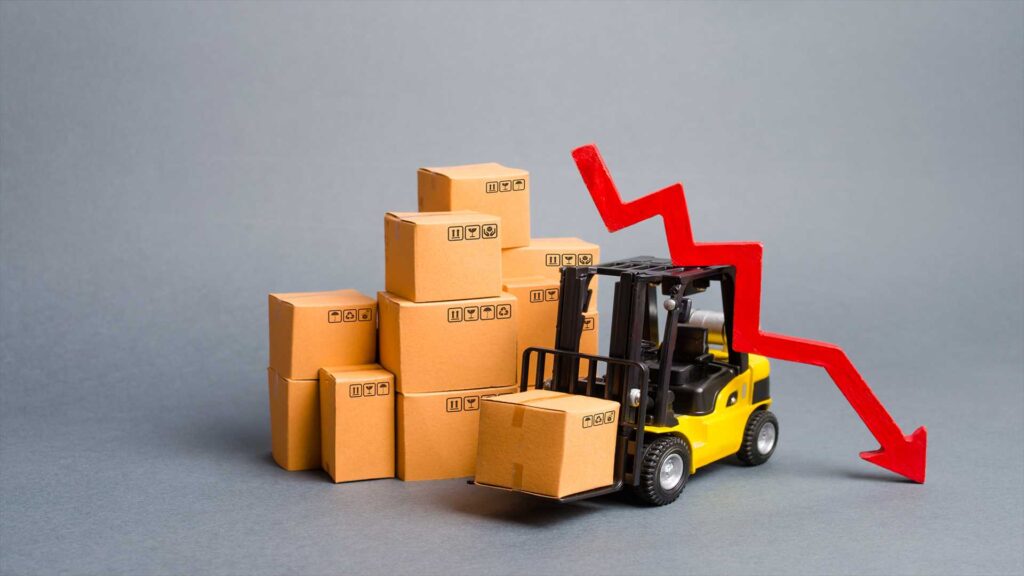In the realm of modern commerce, supply chains are the lifeblood of businesses. They are the intricate networks that ensure products reach consumers efficiently. Yet, in recent years, supply chain disruptions have become increasingly common and impactful. These disruptions, ranging from natural disasters to global crises, can send shockwaves through the most meticulously planned supply chains. This blog delves into the complexities of supply chain disruptions and how businesses can navigate these challenging waters.
Understanding Supply Chain Disruptions

Supply chain disruptions refer to unexpected events or conditions that interrupt the normal flow of goods, materials, or services within a supply chain. These disruptions can occur at any point along the supply chain, from raw material suppliers to manufacturers to distribution centers and retailers. They can be caused by a variety of factors, including
Natural Disasters:
Earthquakes, hurricanes, floods, wildfires, and other natural disasters can damage infrastructure, disrupt transportation networks, and impact the production and distribution of goods.
Global Crises:
Events such as the COVID-19 pandemic, geopolitical conflicts, and economic crises can have far-reaching effects on the supply chain. Lockdowns, trade restrictions, and labor shortages are just a few examples.
Supplier Issues:
Problems with suppliers, such as bankruptcy, quality issues, or production delays, can ripple through the supply chain and disrupt operations.
Transportation Challenges:
Disruptions in transportation, including port congestion, fuel shortages, or strikes, can lead to delays and increased costs.
Cyberattacks:
Cybersecurity breaches can compromise sensitive supply chain data, disrupt operations, and lead to data loss or theft.
Supply chain disruptions can occur due to various factors, impacting the flow of goods and services from the point of origin to the final destination. These disruptions can fall into several categories based on their origins and influences.
Types of Supply Chain Disruptions

1. Natural Disasters and Weather-Related Events
Natural disasters, such as earthquakes, hurricanes, floods, or wildfires, can have a severe impact on the supply chain. They can damage infrastructure, halt production, and interrupt transportation routes, causing delays and shortages.
2. Man-made Disruptions
These disruptions often result from human actions or failures. They may include strikes, political unrest, terrorism, or theft. Political tensions, wars, and conflicts can also lead to blockades and embargoes, disrupting the flow of goods.
3. Supplier and Logistics Issues
Problems arising from suppliers, such as bankruptcy, quality issues, or production delays, can significantly affect the supply chain. Logistic issues encompass delays, damages, or theft during transportation.
4. Technological Disruptions
With an increasingly digital supply chain, cyber-attacks and technology breakdowns can severely disrupt operations. Hacking, system failures, or data breaches can halt the flow of information, affecting manufacturing and delivery processes.
5. Pandemics and Global Crises
Events like pandemics or global health crises, such as the recent COVID-19 pandemic, have a widespread impact on the supply chain. Lockdowns, restrictions, and labor shortages can lead to production halts and delivery delays.
6. Economic and Market Changes
Market fluctuations, changes in consumer demand, or sudden economic crises can disrupt the flow of goods and services. These changes can create overstock or understock situations, impacting the supply chain.
Supply chain disruptions can be further classified based on their severity, duration, and geographical extent. Understanding the types of disruptions is crucial for businesses to proactively strategize and implement measures to mitigate their impact.
In the face of these diverse challenges, businesses are employing robust risk management strategies, implementing technology for visibility and responsiveness, and fostering resilient and agile supply chains to effectively manage and respond to these disruptions.
The Impact of Supply Chain Disruptions

The repercussions of supply chain disruptions can be severe and multifaceted:
Financial Losses:
Delays and disruptions often lead to financial losses due to increased costs, lost sales, and penalties for failing to meet contractual obligations.
Reputation Damage:
Customers expect products to be available when and where they want them. Failing to meet these expectations due to supply chain disruptions can damage a company’s reputation.
Operational Challenges:
Managing supply chain disruptions requires significant time and resources, diverting attention from core business activities.
Prolonged disruptions can result in the loss of market share to competitors who can meet customer demand more effectively.

While it’s impossible to predict every potential disruption, businesses can take proactive steps to build resilience into their supply chains:
1. Risk Assessment: Identify potential sources of disruption in your supply chain and assess their impact. Develop risk mitigation strategies for high-impact scenarios.
2. Diversify Suppliers: Avoid over-reliance on a single supplier or region. Diversifying your supplier base can reduce the risk of disruption.
3. Supply Chain Visibility: Invest in technologies and systems that provide real-time visibility into your supply chain. This allows you to identify and respond to disruptions more quickly.
4. Inventory Management: Maintain strategic inventory levels to buffer against disruptions. Just-in-time inventory practices may need reevaluation.
5. Scenario Planning: Develop contingency plans for various disruption scenarios, including strategies for rerouting shipments, alternative suppliers, and workforce mobilization.
6. Collaboration: Establish strong relationships with key suppliers and logistics partners. Open communication can help address disruptions more effectively.
7. Supply Chain Resilience: Continually assess and strengthen the resilience of your supply chain. This includes regularly testing contingency plans and making necessary adjustments.
Conclusion
Supply chain disruptions are becoming an unfortunate reality in today’s interconnected global economy. Businesses that are prepared to anticipate, mitigate, and respond to these disruptions are better positioned to weather the storm and emerge stronger. While disruptions may be inevitable, they need not be insurmountable obstacles to your business’s success. With strategic planning, proactive measures, and adaptability, businesses can navigate these uncharted waters and keep their supply chains flowing even in the face of adversity.
At Galaxy Freight, we understand the critical importance of resilient supply chains. With our expertise, global network, and advanced technology, we are committed to helping businesses navigate disruptions and build agile, responsive supply chain strategies. We work closely with our clients to develop customized solutions that enhance supply chain resilience and minimize the impact of disruptions.
Don’t let supply chain disruptions catch you off guard. Contact Galaxy Freight today to discuss your supply chain needs and discover how our experience and resources can help you weather the storm of disruptions and emerge stronger and more resilient than ever. Together, let’s build a supply chain that can withstand the challenges of an unpredictable world.



